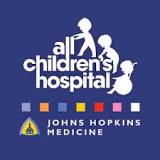A Study of Withdrawal of Immunosuppression and Donor Lymphocyte Infusions Following Allogeneic Transplant for Pediatric Hematologic Malignancies
| Status: | Recruiting |
|---|---|
| Conditions: | Cancer, Other Indications, Blood Cancer, Women's Studies, Hematology |
| Therapuetic Areas: | Hematology, Oncology, Other, Reproductive |
| Healthy: | No |
| Age Range: | Any |
| Updated: | 9/23/2012 |
| Start Date: | October 2009 |
| End Date: | September 2016 |
| Contact: | Biljana Horn, M.D. |
| Email: | crss@cc.ucsf.edu |
| Phone: | 877-827-3222 |
A Phase II Study of Preemptive Fast Withdrawal of Immunosuppression and Donor Lymphocyte Infusions for Achieving Complete Donor Chimerism Following Allogeneic Transplant for Pediatric Hematologic Malignancies
There is no curative therapy once acute leukemia patients relapse after transplant. Patients
who develop clinically significant graft versus host disease (GVHD) have a lower rate of
relapse than those who do not develop GVHD. We are initiating this study of post-transplant
fast withdrawal of immunosuppression and donor lymphocyte infusions, with a goal of
achieving full donor chimerism in children with hematologic malignancies. If our hypothesis
that full donor chimerism results in leukemia-free survival is correct, using immune
modulation to achieve full donor chimerism should decrease relapse rate and thus increase
survival. The goal of this Phase II study is to identify if achieving full donor chimerism
in whole blood CD3+ and leukemia-specific (CD14/15+, CD19+, CD33+ and CD34+) subset may
decrease the risk of relapse of patients undergoing allogeneic transplant for hematologic
malignancy.
The goal of this Phase II study is to identify if achieving full donor chimerism in whole
blood, CD3+, and leukemia-specific subset (CD3+, CD14/15+, CD19+, CD33+ and CD34+ subset)
may decrease the risk of relapse of patients undergoing allogeneic transplant for
hematologic malignancy.
We estimate that total of 50 recipient patients will need to be enrolled. Of these 50
recipient patients an observation group and an intervention group will be formed. We want
to enroll 25 recipient patients in the intervention group, this group will receive study
intervention and their outcomes will be the focus of statistical analysis for this study.
Intervention will involve fast withdrawal of immunosuppression following transplant and
donor lymphocyte infusion (DLI) until full donor chimerism is achieved. Chimerism is a
genetic test that measures the proportion of donor's and recipient's cells in blood or bone
marrow. Twenty five patients will undergo fast withdrawal of immunosuppression and 33 -50%
of them (8-13) will undergo DLI following fast withdrawal of immunosuppression.
Patients will have peripheral blood (PB) chimerism tested upon engraftment. A confirmatory
test from PB and bone marrow (BM) will be done on day 45±7. Minimal residual disease (MRD)
will be examined by immunoflow, FISH, cytogenetics or PCR. Patients with positive MRD will
be on a faster schedule of immune intervention than patients with negative MRD.
Interventions will be carried on until 1 year post transplant. If confirmatory testing shows
no evidence of MRD and full donor chimerism is present in all subsets, the patient will be
part of the "observation" group and be observed until 2 years post transplant. Chimerism
will be repeated at 12 and 24 months post transplant. If the patient has mixed chimerism on
both confirmatory tests (PB and BM), the patient will be part of the "intervention" group
and fast withdrawal of immunosuppression will be initiated. If the patient has mixed
chimerism on one of the confirmatory tests (PB or BM), the test will be repeated in 2 weeks
and the patient will proceed with either observation or intervention, based on the result of
the repeated test. Patients will be followed for the incidence of acute and chronic Graft
Versus Host Disease (GVHD) and relapse until 2 years post transplant. The study will be
considered successful if the relapse rate at 2 years post transplant is ≤20% for the entire
study or ≤ 40% for the intervention group.
Inclusion Criteria:
- Age 6 months - 25 years.
- Diagnoses of acute leukemia (AML, ALL, biphenotypic leukemia), pre-leukemic syndromes
(monosomy 7 or other bone marrow clonal malformations), JMML, myelodysplastic
syndromes or CML.
- Undergoing an allogeneic transplant as standard care.
- Performance status: Karnofsky/Lansky>60%.
- Availability of pre-transplant recipient's DNA and donor's DNA for chimerism testing.
This could be DNA or material from which DNA could be extracted. Frozen blood would
be preferred. For some patients, post transplant specimens that are not infiltrated
with donor cells may be used.
- Bone marrow or PBMTC as stem cell source.HLA matching: donor and recipient should be
matched at a minimum of 7/8 antigens (A,B,C and DrB1) for bone marrow and PBMTC
transplants.
- No history of ≥grade III acute GVHD.
Exclusion Criteria:
- Treatment on other experimental protocols, if withdrawal of immunosuppression
interferes with procedures of follow-up on the primary study.
- Leukemia relapse defined as > 5% blasts on bone marrow exam or >1% leukemia cells by
immunoflow MRD, or presence of extramedullary leukemia.
- History of acute GVHD ≥ stage III or with any degree of active acute or cGVHD.
- On steroids for any reason.
- Any condition that compromises compliance with the objectives and procedures of this
protocol, as judged by the principal investigator.
- Cells for DLI cannot be obtained from the donor.
We found this trial at
2
sites
All Children's Hospital All Children's Hospital provides expert pediatric care for children and families from...
Click here to add this to my saved trials
Click here to add this to my saved trials
